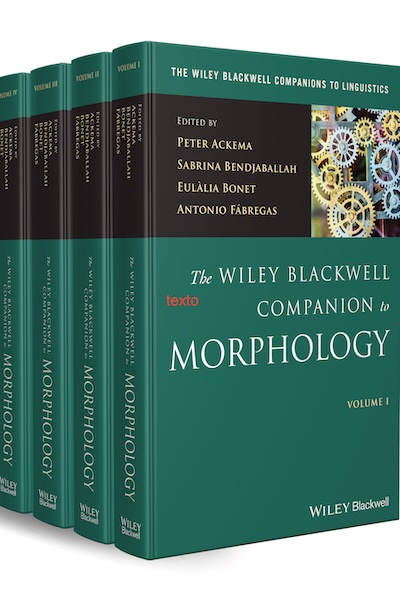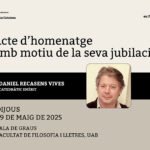10 juliol, 2015

Autors:
Eulàlia Bonet, Maria-Rosa Lloret, Joan Mascaró
Títol:
Understanding Allomorphy. Perspectives from Optimality TheoryEditorial: Equinox Publishing
Data de publicació: 2015
Pàgines: 418ISBN13: 9781845532970
Més informacióThis volume is a collection of original contributions to the study of lexical allomorphy, with a focus on Optimality Theory’s distinctive take on this topic. The chapters provide an up-to-date perspective on the advances in our understanding of allomorphy which Optimality Theory has been able to secure (in comparison with rule-based Generative Phonology). They also consider a number of important allomorphy questions which Optimality Theory has helped raise and address (e.g. the nature of inputs, the role of paradigms, the interaction of phonology with other modules of grammar, lexical storage vs computation, degrees of phonological (ir)regularity, subcategorization vs markedness).
The contributors form an international array of linguists from North America and Europe. A broad variety of languages serve as the empirical base for the volume, either in detailed case studies (e.g. Burushaski, Catalan, English, French, Italian, Moroccan Arabic, Sahaptin) or in encompassing typological surveys.
The volume is aimed at professional linguists with an interest in phonology, morphology, and the lexicon. With its broad coverage of allomorphy issues, the book’s content will also lend itself to courses in phonology and morphology for advanced undergraduates and graduate students.
15 setembre, 2019

Autors:
Eulàlia Bonet, Lisa Lai-Shen Cheng, Laura J. Downing i Joan Mascaró
Títol:
(In)direct Reference in the Phonology-Syntax Interface under Phase Theory: A Response to "Modular PIC" (D'Alessandro and Scheer 2015)Editorial: Linguistic Inquiry, vol.50(4). MIT Press
Data de publicació: Tardor de 2019
ISBN13: E-ISSN: 1530-9150
Més informacióAlthough in many interface theories, the domains of phrasal phonological processes are defined in terms of prosodic constituents, D’Alessandro and Scheer (2015) argue that their proposed modification of phase theory, Modular PIC, renders prosodic constituents superfluous. Phrasal phonological domains can instead be defined directly in the syntax. In this response, we argue that Modular PIC does not provide a convincing new approach to the syntax-phonology interface, as it is both too powerful and too restrictive. We show that the analysis offered of raddoppiamento fonosintattico in Eastern Abruzzese does not justify the loss of restrictiveness Modular PIC brings to phase theory. We also show that Modular PIC is too restrictive to account for phenomena, from Bantu languages and others, that have received satisfactory analyses within interface theories that appeal to prosodic constituents. We conclude that Modular PIC does not successfully replace prosodic constituent approaches to the interface.
2 juliol, 2022

Autors:
Eulàlia Bonet & Francesc Torres-Tamarit
Títol:
Typologically Exceptional Phenomena in Romance PhonologyEditorial: The Cambridge Handbook of Romance Linguistics, Cambridge University Press
Data de publicació: 23 juny 2022
Més informacióThis chapter on Romance phonology reviews several phenomena that can be qualified as typologically rare. Some of the phenomena examined are rarely documented within Romance but are relatively common in other language families, while others are hardly attested in the world’s languages but are present to some degree in Romance. Their relative frequency across languages and geographical distribution have been assessed with the help of three online databases that are publicly available: PHOIBLE, WALS, and the World Phonotactics Database. In addition, the challenges that these phenomena represent for phonological theory are also briefly considered. The topics examined in this chapter concern (i) phoneme inventories; (ii) syllable structure, with a focus on consonantal clusters; (iii) segmental processes involving glides, nasal place neutralization, lenition and fortition, and metathesis, among others; and (iv) issues at the morphology–phonology interface involving suprasegmentals.







